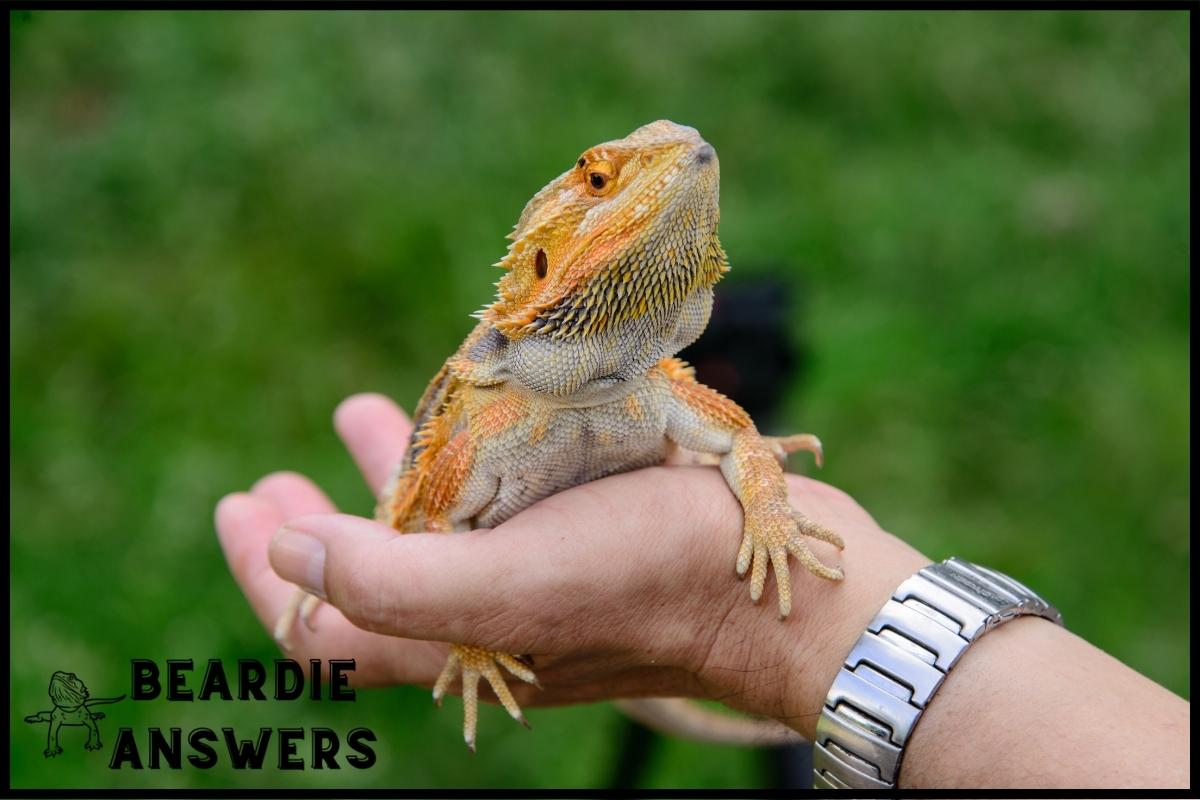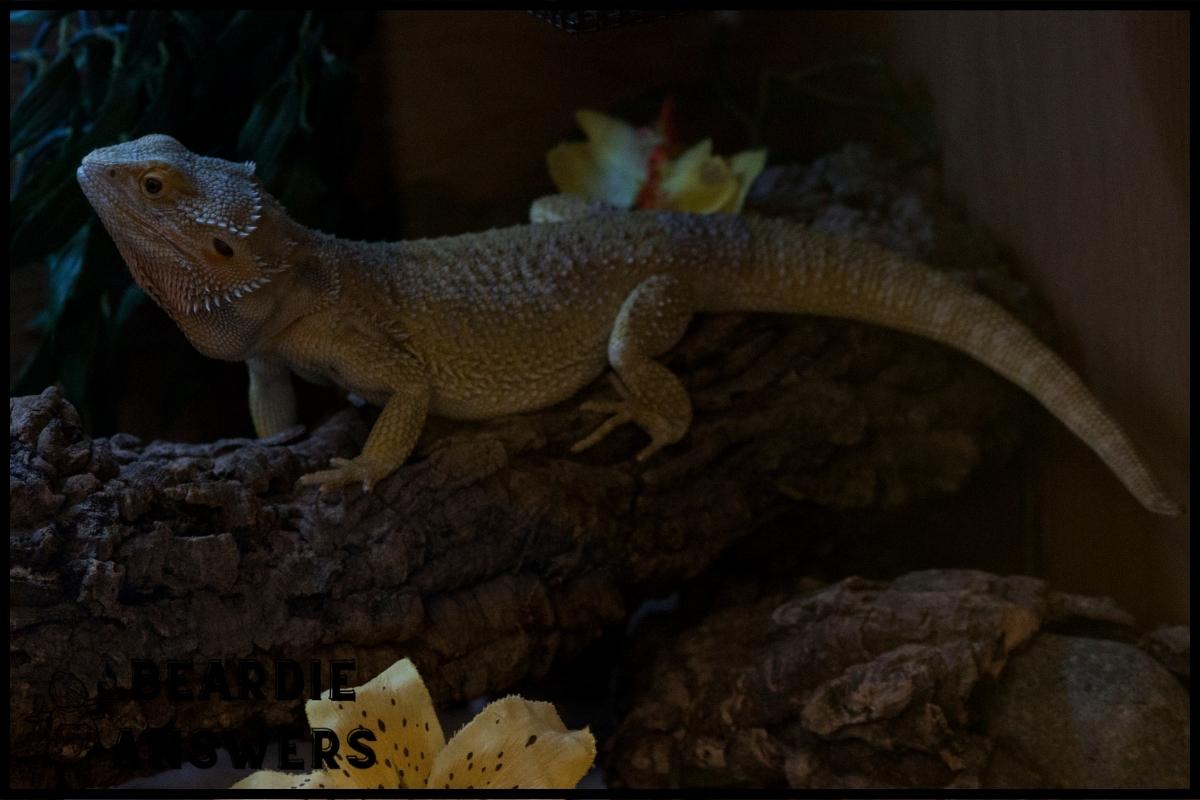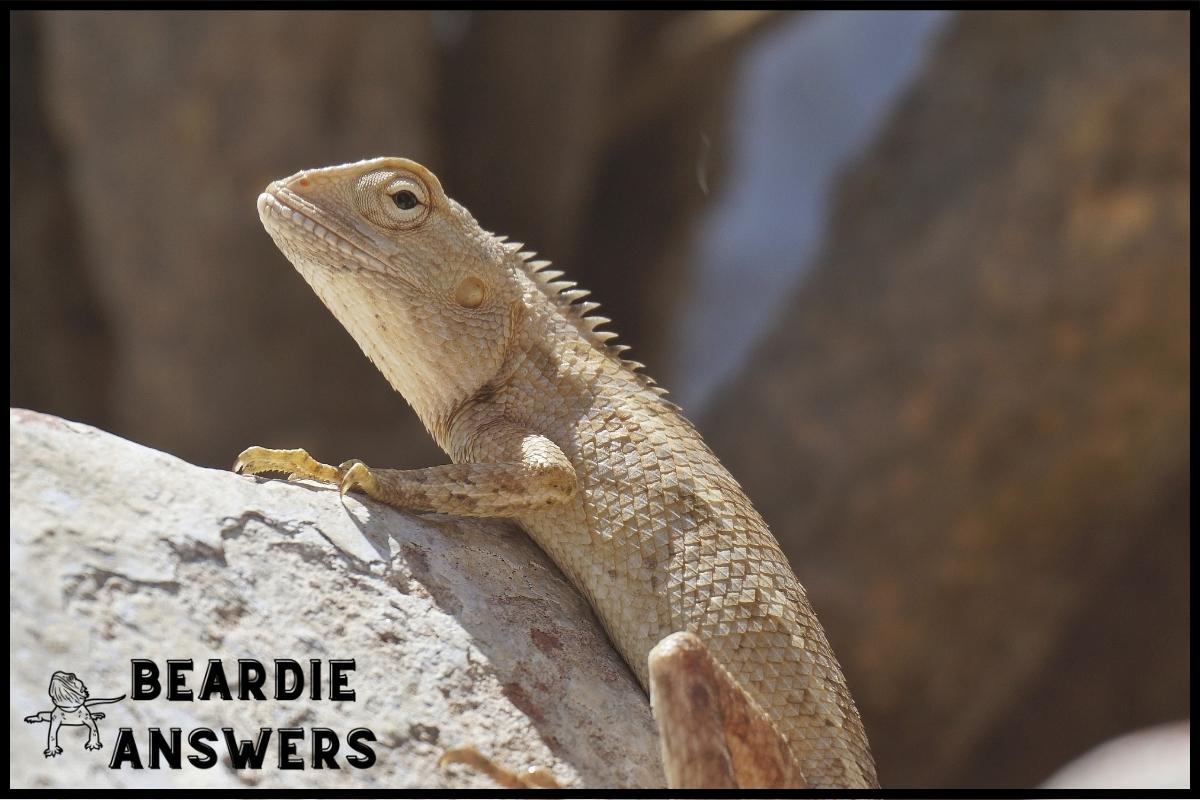Sexing a bearded dragon can be done by looking at their femoral pores, which are located on the underside of their hind legs. Males have larger pores and a broader head, while females have smaller pores and a smaller head. However, it can be difficult to sex a juvenile or immature bearded dragon.
What You'll Learn
What Are Femoral Pores?
Sexing a bearded dragon involves identifying the sex of the animal based on physical characteristics.
One common method for sexing is to look at the size and shape of femoral pores, which are found around their thighs.
These pores can indicate gender because males typically have larger, more visible femoral pores than females do.
It’s important to note that when comparing pore sizes between different individuals, it should be done side-by-side as they can vary in size depending on age or health.
In addition to looking at pore size, you can also examine other features such as head width and length.
Male bearded dragons tend to have broader heads while female heads are smaller and thinner in comparison.
The overall body size may also provide clues; males will generally be slightly bigger than females given the same age and environmental conditions.
Since there isn’t one definitive method for determining gender, it’s best to use these methods together for accuracy.
By examining both femoral pore size and head shape/width alongside general body size, you’ll be able to identify male bearded dragons with greater confidence.
With this knowledge, you’ll better understand how to care for your pet appropriately!
Identifying Male Bearded Dragons
When it comes to sexing a bearded dragon, femoral pores are one of the most important indicators. These small bumps located on the underside of the rear legs help distinguish between males and females. And while these may seem like subtle differences, they play a vital role in breeding behaviors and mating rituals.
Anachronistically speaking, you could say that size matters when determining the sex of your bearded dragon! Male bearded dragons typically have larger femoral pores than their female counterparts along with a broader head — making them easier to identify at first glance.
Females, however, tend to have smaller pores and a more petite frame. It’s crucial for successful mating or even just finding out who’s who in your reptile family that you can accurately differentiate between male and female bearded dragons by examining their femoral pores alongside other physical characteristics such as body shape and size.
With this knowledge under your belt, you’ll be ready to move on to identifying female bearded dragons!
Identifying Female Bearded Dragons
Let’s start by examining the body proportions of the bearded dragon, as females have a smaller head and body than males.
We’ll also need to take a look at the femoral pores to be sure – males have larger pores than females.
Examining Body Proportions
When it comes to identifying female bearded dragons, examining body proportions is key.
By taking a close look at anatomical features such as the size of their femoral pores and the shape and width of their head, you can easily determine gender.
Male bearded dragons typically have larger femoral pores and broader heads than females who possess smaller femoral pores and more narrow heads.
The visual cues are quite obvious making it easy to distinguish between males and females.
All in all, sexing a bearded dragon isn’t too difficult if one knows what they’re looking for!
Noting Femoral Pores
Once you know what to look for, distinguishing genders is quite easy.
Male bearded dragons typically have larger femoral pores and broader heads than females who possess smaller femoral pores and more narrow heads – it’s a very clear difference between the two sexes!
Noting the size of these femoral pores can be an effective way of determining gender differences in your pet.
With just a few simple observations, you’ll be able to identify female bearded dragons with relative ease.
Importance Of Accurate Sexing
Accurately sexing your bearded dragon is important for a variety of reasons. Knowing the gender can help you plan for spaying or neutering when they reach adulthood, as this helps prevent unwanted behavior such as aggression and mating urges. It also allows you to monitor their health more closely by understanding age-dependent needs associated with each gender; males may require additional calcium supplementation due to breeding activities, while females should be monitored for egg binding if repeatedly exposed to male dragons.
In addition, accurately determining the sex of your pet will allow you to provide an appropriately sized habitat based on its size and maturity. Males tend to grow larger than females, so cages need to be large enough not only now but in the future when they fully mature.
Without knowing the gender of your dragon it would be difficult to make sure that you are providing them with ample space and resources throughout all stages of life.
It’s clear that correctly identifying the sex of a bearded dragon is essential for ensuring proper care over its lifespan. Understanding factors that affect sexing accuracy will help owners avoid potential pitfalls resulting from incorrect assumptions about gender.
Factors That Affect Sexing
Sexing bearded dragons can be a tricky task, especially for those who are new to owning them. There are several factors that can help distinguish between males and females – the most important being size and shape of the head, femoral pores, tail length and shape, as well as breeding behavior.
Here is a 3-item list to keep in mind when observing these characteristics:
- Males typically have larger heads than females with more prominent jowls on their cheeks.
- Females usually have smaller femoral pores than males located along the underside of their hind legs near the thighs.
- Breeding behavior also plays an important role in sexing bearded dragons; males tend to bob their heads up and down while displaying dark colors around the throat area during courtship rituals while females will often turn away or arch their back as they try to escape from aggressive male advances.
Taking into account all of these features such as size, shape, pore size and breeding behavior should give you enough information to accurately determine what sex your bearded dragon is without having to resort to expensive DNA testing.
Knowing this information can help you make sure your pet has everything they need for optimal health and safety going forward!
Tips For Sexing Bearded Dragons
When sexing a bearded dragon, one of the most important characteristics to look for are its femoral pores. Male dragons have larger and more prominent pores than females.
Additionally, males tend to have broader heads whereas females will typically have smaller heads.
Other signs that differentiate between male and female bearded dragons include breeding behavior and gender-specific colors. Generally speaking, males become much more active during mating season as they attempt to court potential mates with head bobbing and other displays of aggression.
On the other hand, female dragons may be seen displaying dark stripes on their throats when courting by males or protecting their eggs in nesting areas.
Coloration is also an indicator: Males tend to be brighter and multi-colored while females often appear duller in color or display very light yellowish markings around their eyes, legs, and tail.
All these factors should be taken into account when attempting to accurately determine the gender of a bearded dragon. With some practice, it can become quite easy to identify the sex of your pet reptile!
Conclusion
Accurately sexing a bearded dragon is an important part of being a responsible pet owner.
With the help of this article, you should now know that males have larger femoral pores and broader heads while females have smaller pores and smaller heads.
Knowing these distinct characteristics will allow owners to make sure they are providing their dragons with the best possible care by tailoring it towards the gender’s needs.
It’s also a great way for them to bond with their beloved reptilian friend.
All in all, sexing your bearded dragon can be a rewarding experience when done correctly!

Hi! My name is Bryan, I am the “one behind the words” here are BeardieAnswers.com. I believe that providing quality care and nutrition is the best way to ensure the health of your pet. Every beardie is special and deserves the best care and attention. If you have questions about your bearded dragon, please don’t hesitate to ask! View My Full Author Page




